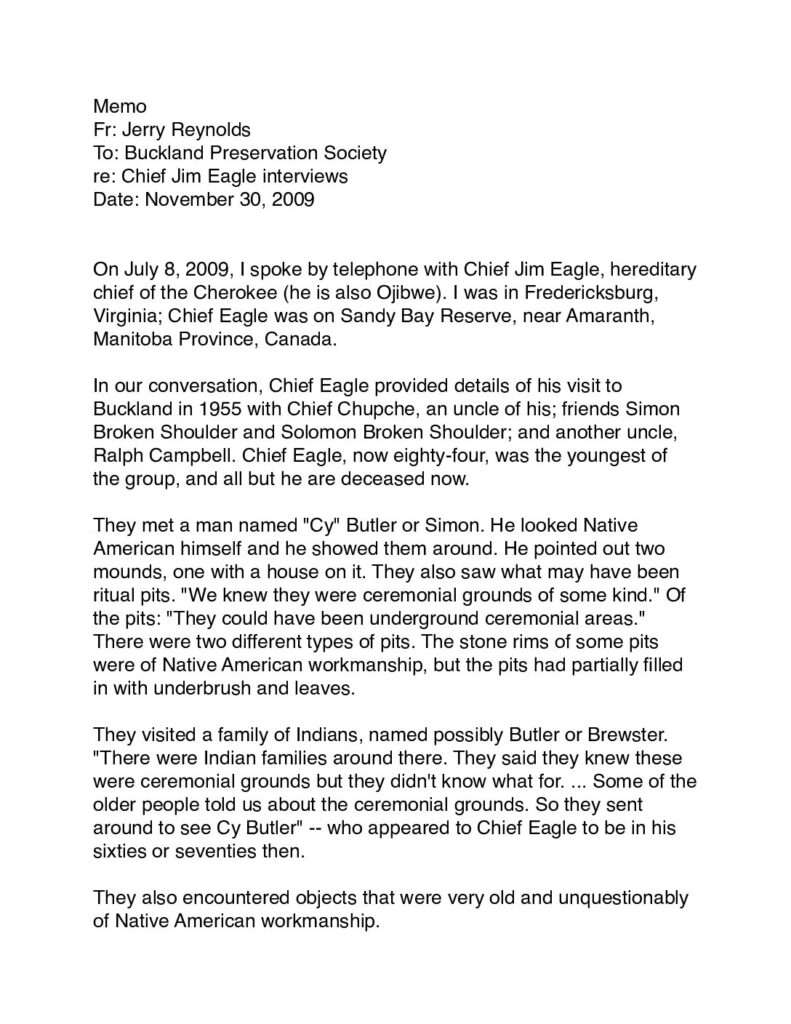Native American
Archaeological testing on the Buckland Mills tract yielded clear evidence of a mid- to late nineteenth-century domestic occupation a short distance to the west and upslope of the extant Buckland Mill. Further upslope at the highest elevation of the project area evidence of a late nineteenth-century habitation site was found on the hilltop along the western boundary of the property. Meanwhile, judgmental shovel testing in the northern portion of the property in the floodplain of Broad Run indicated the potential for archaeological evidence of prehistoric Native American occupation is poor due to the floodplain setting. Finally, the JRIA-DATA team documented the historic mill race, one of Buckland’s earliest and most substantial historic features, and a key component of the town’s industrial landscape.
In July 2009, Jerry Reynolds and David Blake of the BPS conducted telephone interviews with the 84-year-old Chief Jim Eagle, the hereditary chief of the Cherokee, then on the Sandy Bay Reserve near Amaranth in Manitoba, Canada. Chief Eagle described in detail a visit he made to Buckland in June 1955 with his uncles Chief Chupche and Ralph Campbell, as well as friends Simon Broken Shoulder and Solomon Broken Shoulder. The group had traveled to Virginia, he explained, at the behest of the Chickamauga Grand Council Confederation to visit with the major Native American councils, including the Mattaponi and Pamunkey, in order to explore the history of the Cherokee presence in the region, and specifically at Buckland.
During their visit to Buckland, Chief Eagle and the others met with Simon “Cy” Butler, as well as other Native American families named Brewster and Webster who lived nearby. Based on their discussions with the local residents, they understood that Buckland had served as an important Cherokee trade and ceremonial center, while the large hill east of Broad Run at Cerro Gordo may have represented a step mound. They visited several smaller earthen mounds in the vicinity, and learned that numerous others had since been destroyed by farming and development. The local Native American families showed them a number of round depressions four to five feet deep which were thought to represent the remains of earth lodges, clay pits, or possibly ceremonial features. And they also collected a quantity of Native American lithic artifacts.

